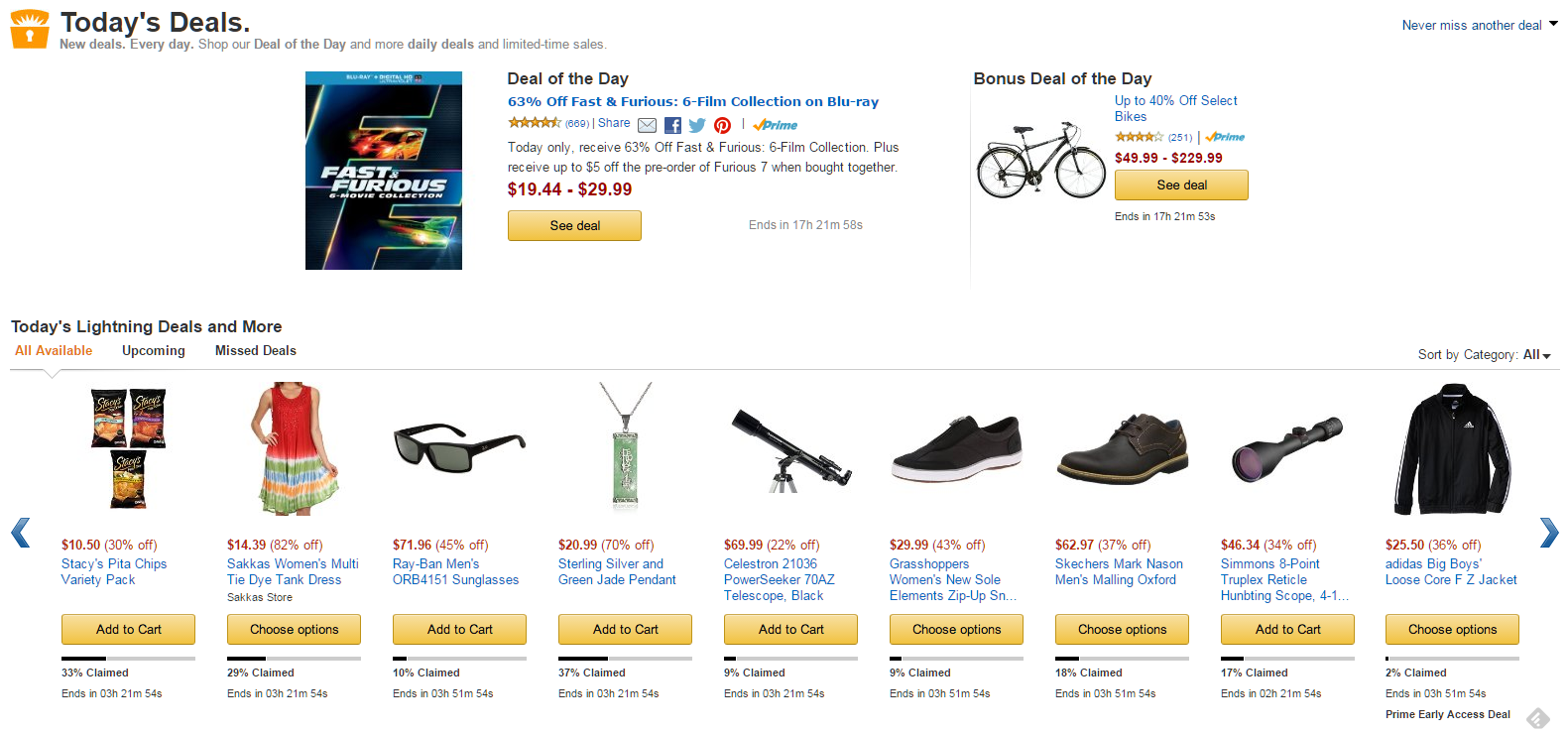On July 15, Amazon held its first “Prime Day,” which featured a variety of on-site sales exclusive to members of its Prime service.
And a few things went wrong.
So, for a limited time only (i.e., as long as our Web servers last), at a sizeable discount (i.e., free), and without further ado (i.e., unless you’re busy), let’s go over a few customer centricity best practices we can glean from the event.
Work to manage and deliver on customer expectations.
One criticism of Amazon’s Prime Day was the fact that buyers couldn’t find what they were looking for. One reason was the left-to-right, carousel layout of Amazon’s deals section, which looks like this today:

The carousel is serviceable for users casually browsing for items, but not ideal for users actively tracking flash sales.
Let’s say you saw a cheap HDTV in the “Upcoming” sales section, then clicked into the “All Available” section when it became available. Would you be able to scroll through the carousel fast enough to get one?
Probably not, because you’d only have a few seconds before they’d be sold out.
And so you’d sit, faced with a smoldering realization that there are vast numbers of people better than you at buying cheap televisions on the Internet.

Customer have expectations, and they hold grudges when those expectations aren’t met. The more you can remove their barriers to doing business with you, the more they’ll work with you. And the more you can deliver on those expectations and build customer loyalty.
Focus small in your customer experience strategy.
Each customer experiences something different and tangible in their interactions with you. Which is why blanket, public promises to all of your customers are so hard to uphold.
In the case of Prime Day, one customer might have interpreted “more deals than Black Friday” as “I will see better prices than Black Friday.” Another might have interpreted the same to mean “I will buy more discounted goods than I did this past Black Friday.”

It seems like both would have been disappointed.
You can avoid such disappointment by taking time to develop customer understanding in your customer experience strategy. If you can be specific about your customer segments, you can take greater account of them when you’re making decisions. It can also keep you focused on promises you can keep.
Customer backlash comes in bulk.
Perhaps it comes as no surprise the response to Prime Day has been one of disappointment. But still, it’s had its entertaining moments.
The Internet has a funny way of creating communities with common interests. That communal quality works both to facilitate loyal promoters or vocal detractors.

In terms of your customer centricity strategy, consider if you’d like people to unite around customer satisfaction or frustration.
Instead of waiting for a bulk shipment of harsh customer criticism, get proactive with a Voice of the Customer program. By making an operational habit out of listening and responding to customer feedback, you can address issues discover flaws in your customer experience before they snowball.
Want more?
We live for helping companies become more customer-centric. If you’re interested in working with PeopleMetrics, check out our about us section.
For more information about CustomerMetrics, our Voice of the Customer program, click the button below.

Image Credits:
- Elderly woman sits alone at Christmas by simpleinsomnia, CC BY 2.0
- US-ECONOMY-BLACK FRIDAY by Diariocritico de Venezuela, CC BY 2.0
- hanka holding katerina’s hand by nate bolt, CC BY-SA 2.0
This article was syndicated from Business 2 Community: What Amazon Prime Day Can Teach You About Customer Experience
More Sales & Marketing articles from Business 2 Community:




